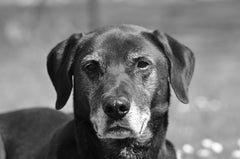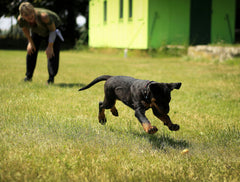
If you have ever been at home flipping around the TV channels, you may have seen professional competitions of dog agility training. You'll see these dogs going through various obstacles in record time and record speed.
These dogs don't magically have this skill. Instead, their owners train them to run these courses with such precision and speed. Even if you aren't interested in making your dog enter competitive events, this form of training still has numerous physical and mental health benefits for your pup!
Here are five things you need to know about this subject before you start training your dog!
Dog Agility Training Courses Are a Team Sport

Before you go out to buy any puppy or dog training treats and tools, you have to commit to the mental and emotional investment that you have to make to both your dog and the training.
Your dog will not naturally run through this course or even understand it. Indeed, your four-legged friend will need a lot of attention as you start to teach them each step, and they'll also need a lot of love and encouragement throughout the process. Make sure to use positive reinforcement and treats to promote certain behaviors and moves.
You'll also need to train your dog to focus their attention on you, which is key to running through the course seamlessly with you guiding them. The best and most common way to accomplish this is by teaching them the "watch me" cue. There are tons of examples of how to teach this cue to your dog. For example, there's this one from Chewy.
Ultimately, this is a partnership. If you want your pup to get good at dog agility courses, it'll take equal investments from both of you to succeed.
You'll Need a Variety of Dog Agility Course Tools

If you are committed to going through this training with your dog, you'll need the right equipment.
The most important term to know when deciding on puppy or dog agility course tools is "contact obstacles." "Contact obstacles" are a series of obstacles that are mandatory in any dog agility course contest. The most common ones are A-Frame, Dog Walk, Seesaw (or Teeter), and Table. Therefore, when you're shopping for obstacles, these should be at the top of your list!
There are several other obstacles that you might want to include in a course. These include the Pipe Tunnel, Weaves, Chute, and the numerous different Jumps. You'll want to start small, but as your pup masters the easier ones, you'll probably want to begin making your course bigger! Again, this is part of the continuous training process where your dog masters one path and then learns another!
Consider Teaching Your Dog Tricks Before Starting Dog Agility Training

Before your dog can properly run through the dog agility course, you're going to want to teach some tricks. The act of training your canine friend to do tricks will develop their coordination and improve your dog/handler relationship.
There are simple tricks such as sit, come, stay, and go to help you control how they take the agility course. For example, the "go" trick can be what you use to start the run.
From there, you'll want to teach them moves that help you maneuver them around the course. The easiest way to do this is to use simple hand signals that your pup can follow through the puppy agility training.
Typically, trainers use pointing. However, you can also teach your dog to touch your hand with their nose or chin whenever you put your hand down in a specific position. Either method will allow you to guide them better through the dog agility course.
Know Your Puppy's Fears

You might not realize that your dog has fears and mental blocks. Certain things will naturally make your dog weary or uncomfortable, and you'll have to help them overcome them. The most obvious one is fear of the dark. While some dogs don't struggle with this, many will have issues the first time you try to get them to run through a Pipe Tunnel or Chute.
The most straightforward step to take is to buy or makeshift a tunnel that's short in length. You'll want to make sure you're visible on the other end of the tunnel, and it'll be even easier if you have a treat with you to entice your pup to the other end. It may not be easy, but with time your dog will learn to trust you.
Other obstacles may cause your puppy to have fear. With each one, treat your dog with kindness and love. Eventually, your canine friend will learn how to navigate these issues!
Have Fun While Training

While dog agility training can feel frustrating at times, you should always try to have fun with it as much as possible. It's a beautiful opportunity for you and your dog to connect, play, and learn something new about each other. Even if they don't get things perfect, trust that your dog is intelligent and will eventually learn. Before you know it, your dog will be running around the obstacle courses in minimal time!
Dog Agility Training Is an Achievable Goal

If you want to commit to training your dog to run a puppy or dog agility course, it's an entirely accomplishable goal.
Please remember that you need to commit to the training, you need to research both dog agility course tools and competitions (if you're interested), and you need to pay attention to your dog's fears.
You'll also need to see how they react to your training techniques. Don't be afraid to try new things.
Finally, make sure to train them with positive reinforcement, and have fun!
What is dog agility training?
How to make a dog agility training course?
How to agility train your dog?
Related Posts:
- Dog Obedience: Training Man's Best Friend
- Dog Exercise: What you Need to Know to Keep Your Pup in Shape
- Dog Recall Exercises




